Nothing says agriculture like alfalfa. While not the sexiest of crops, there is something positively archetypal in the image of cut rows all lined up in a field; stripes of green on green as they curve over a hip of hill and meet the blue horizon. It’s the classic American picture of a farm: sunshine, tractor, green streaked field. As the fourth of July approaches, rooted decided to give a nod in the direction of this slice of Americana. Since alfalfa is used to feed livestock, we headed down to the Sunnyside area, and visited with farmer/dairyman Jason Sheehan of the J & K Dairy. Don’t let the peaceful image fool you. As with all ag, the underlying process is quite impressive and involved.
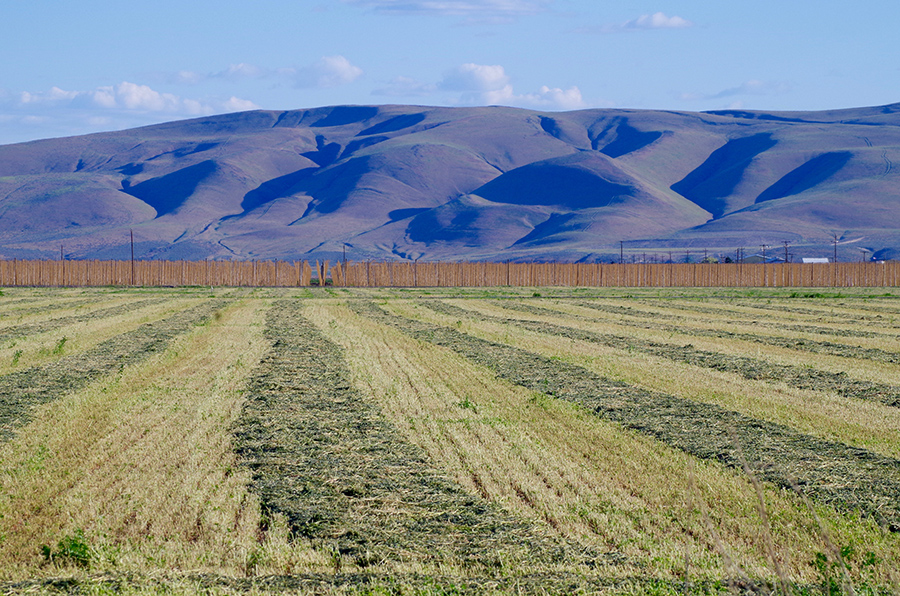 Driving down Van Belle Road on a Wednesday morning the sky was clear and the sun was just getting its heat on for the day. Shelley and I arrive just in time to see Jason as he is finishing raking the cut alfalfa into larger rows for pick up. It smells fantastic—fresh, green, and earthy. He is kind enough to jump out of the tractor for a quick spell and chat us up.
Driving down Van Belle Road on a Wednesday morning the sky was clear and the sun was just getting its heat on for the day. Shelley and I arrive just in time to see Jason as he is finishing raking the cut alfalfa into larger rows for pick up. It smells fantastic—fresh, green, and earthy. He is kind enough to jump out of the tractor for a quick spell and chat us up.
Like grass, it grows after it is cut. A typical year will see six cuttings as they harvest about every 28 days. Pick it too soon and the yield is too low. Pick it too late and the nutritional density is reduced. He says he got a later start this morning because it was a bit wet so they had to give it an hour to dry out some. Moisture content is a big deal for alfalfa. If it’s too wet, it will decompose too quickly, and it needs some longevity if its going to last into the coming year to feed the cows. He hops back in the tractor and finishes up. We watch as another tractor enters the field to collect the rows. This will not be baled, but taken to the dairy and laid in mounds.
When he’s done, he has more time to talk. Being a dairy owner, he has access to fantastic manure which he uses to fertilize his fields. Both the soil and the manure are tested and from there an agronomist recommends the when and how much of application. Jason tells us that it builds up the organic matter in the soil which increases the soil’s ability to retain water, and that the complexity of the macro- and micronutrients beyond the usual N-P-K enriches the soil further.
Heading down to the dairy, we hop in a truck with Jason for a closer look around. He takes us to see the area where the alfalfa is kept. There are giant hills of white plastic covered in tire rounds which are the previous alfalfa cuttings from this year and the corn silage from last year. The dairy cow smorgasbord. As it is not baled, the loads are dropped into large piles, where they are packed down tightly to keep out as much oxygen as possible and promote fermentation. It is then covered tightly and used when needed.
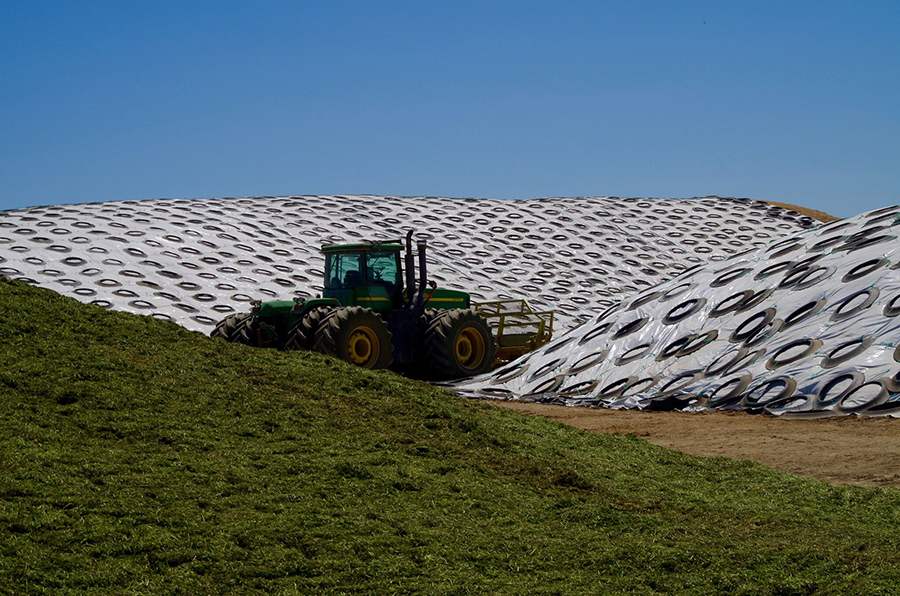 Jason knows which mound is from which cutting for the year, as every cutting has different nutritional qualities. The first and sixth are the most nutritionally dense because of the slower growth in the spring and fall. This is important because different cows have different nutritional requirements depending on where they are in terms of growth and lactation. He shows us the last bit of the sixth cutting from last year, the waning hill exposed and excavated with use.
Jason knows which mound is from which cutting for the year, as every cutting has different nutritional qualities. The first and sixth are the most nutritionally dense because of the slower growth in the spring and fall. This is important because different cows have different nutritional requirements depending on where they are in terms of growth and lactation. He shows us the last bit of the sixth cutting from last year, the waning hill exposed and excavated with use.
Driving back to our car, we see black and white cows everywhere eating their fill. It’s an amazing circle to see—the fields that grow the food that feeds the cows that create the manure which enriches the soil for the fields that grow the food that feeds the cows. That’s quite a slice of farm-style Americana.

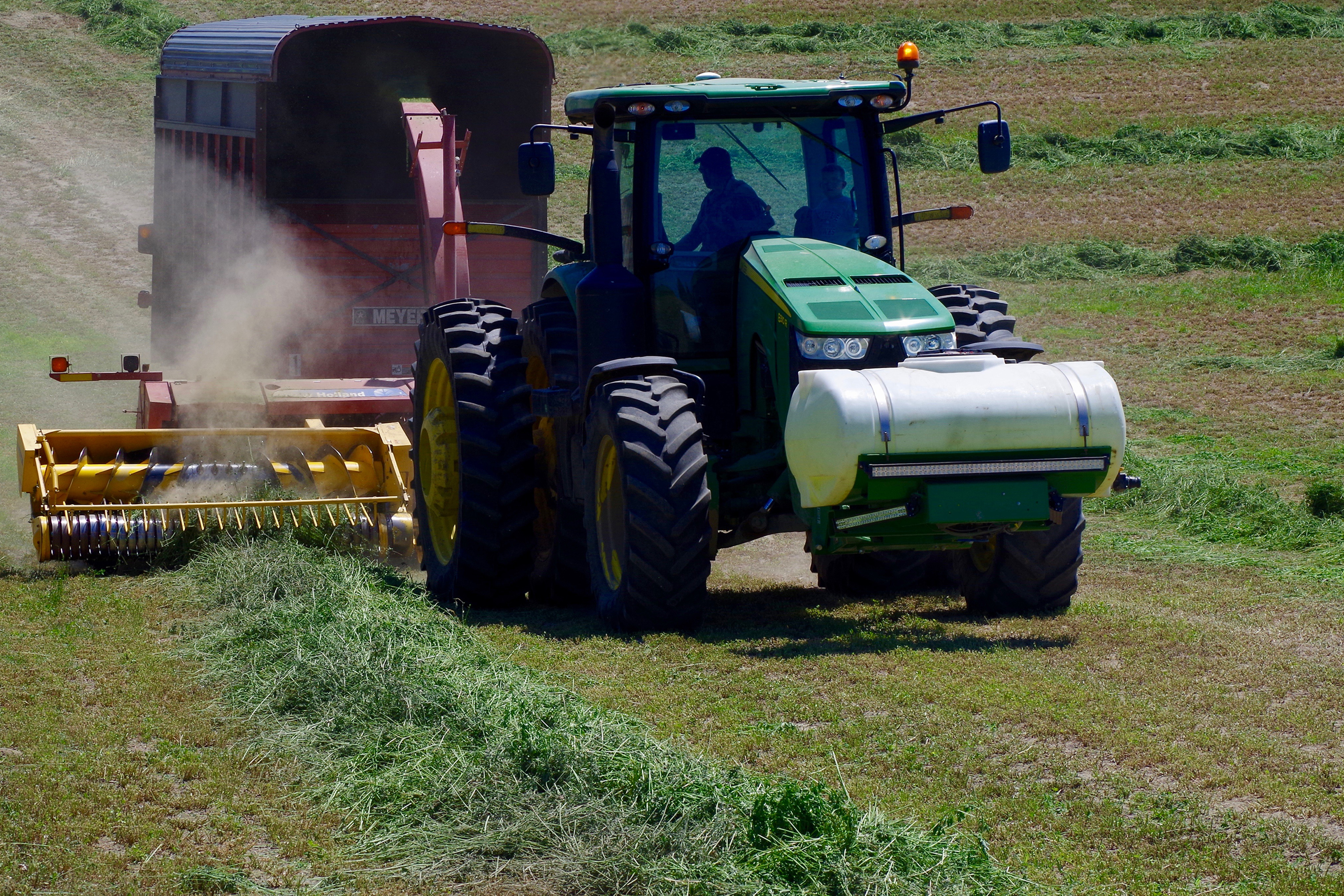






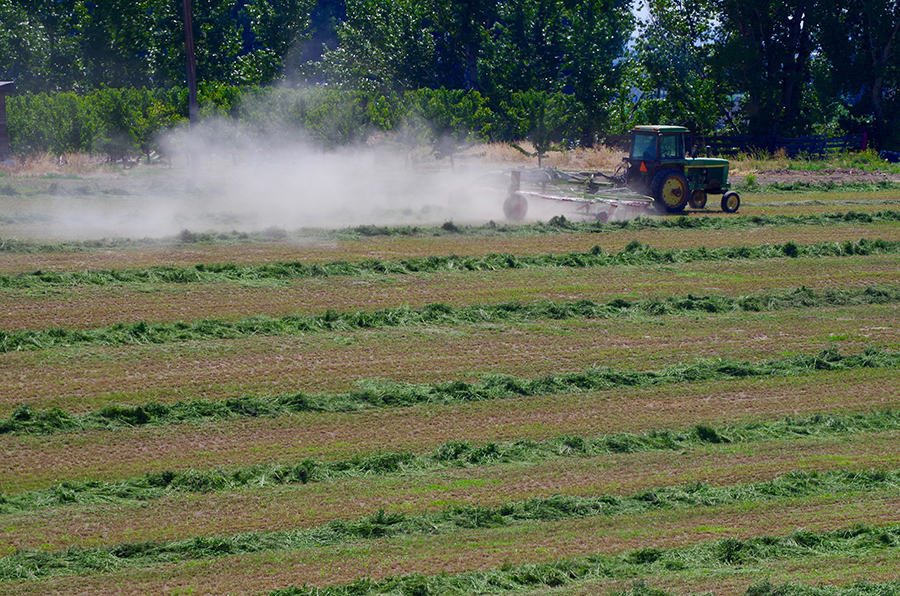
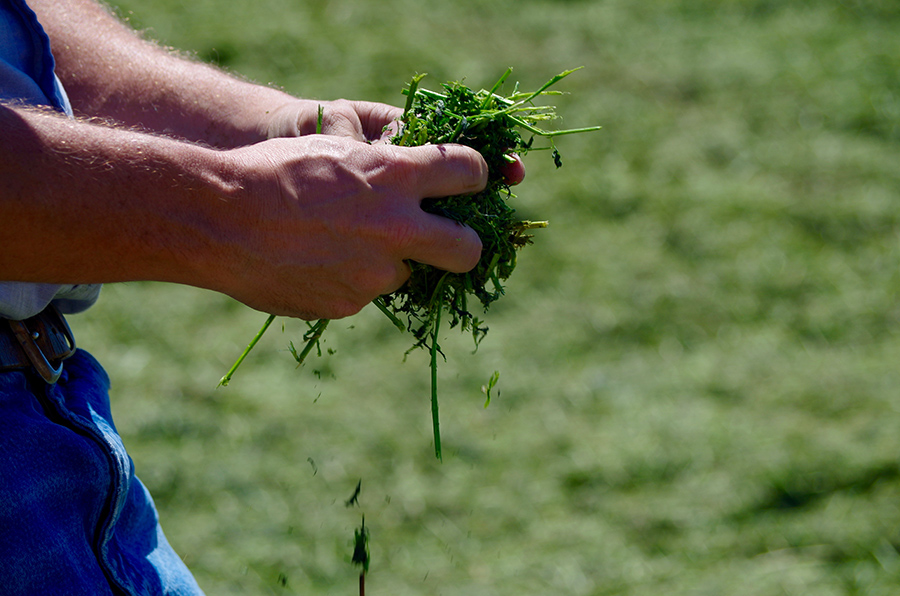


The Rooted articles are so interesting! I enjoy learning more about the people, the operations and the crops which create the agricultural base of our valley. Keep up the good work!!
Again, another great article!!! It is funny to see how sophisticated farming has become. I grew up on a dairy farm and I know my Dad didn’t use an agronomist. Also, those black & white cows are Holsteins. ?